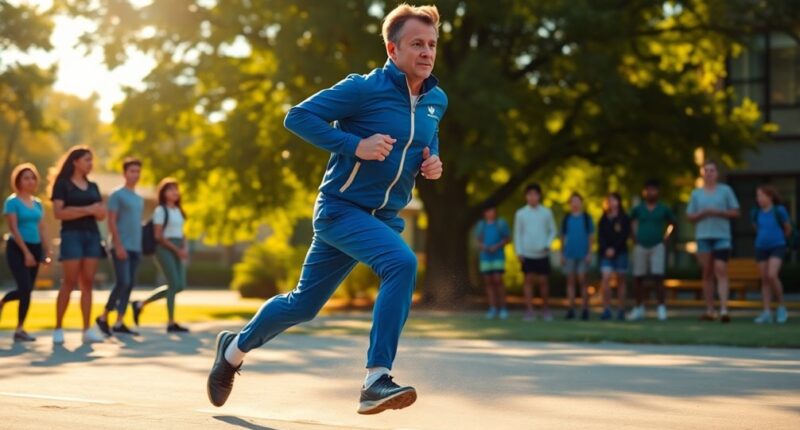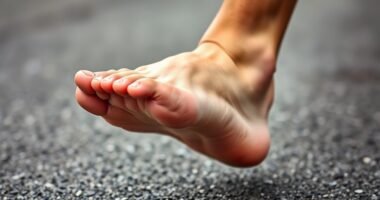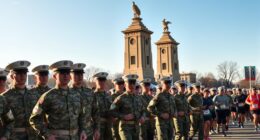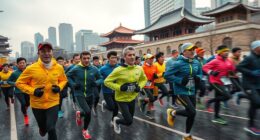A high-school physics teacher's groundbreaking discovery is challenging everything you thought you knew about running efficiency. By incorporating hands-on experiments, the teacher's insights have sparked serious discussions among sports scientists. They're questioning established beliefs and redefining athlete performance measures. This fresh perspective encourages reevaluation of training methods, potentially leading to improved outcomes for runners. The implications for education and sports science are significant, hinting at a transformative future both in and out of the classroom.
Key Takeaways
- The teacher's discovery challenges traditional beliefs about running efficiency and biomechanics, prompting a reevaluation of athlete performance.
- Innovative teaching methods engaged students in hands-on experiments, linking physics principles directly to athletic performance.
- Integration of experimental data into sports science research provided new insights, encouraging updated training techniques for athletes and coaches.
- The discovery highlights the importance of practical applications in education, inspiring students to think critically about science in real-world contexts.
- This dialogue may lead to transformative changes in sports science, reshaping future research and athlete training methodologies.
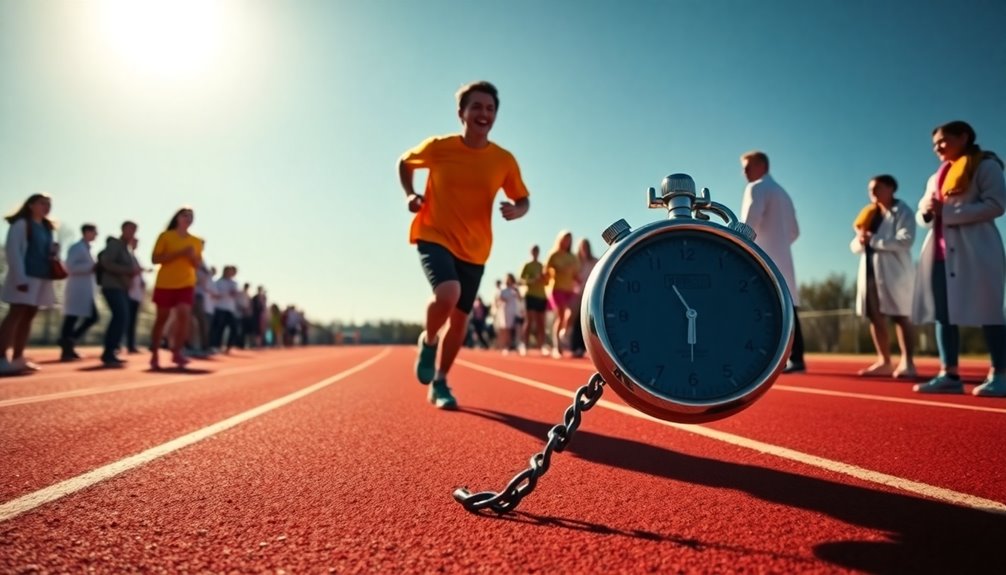
When a high-school physics teacher stumbled upon a discovery related to running, it sparked significant discussions within the sports science community. His innovative approach to merging high school science with real-world athletic training challenged established beliefs about athlete performance and biomechanics. You might find this intersection of education and sports fascinating, as it could transform how we understand running efficiency.
This physics teacher utilized hands-on experiments in his classroom, engaging students while collecting experimental data that directly tied physics concepts to athletic performance. By demonstrating how the principles of physics apply to running, he not only captivated his students but also opened doors to a broader dialogue about training techniques. His findings suggest that traditional methods of measuring running efficiency may overlook critical factors that could enhance an athlete's performance.
The discussions triggered by his discovery emphasized the importance of integrating experimental data into sports science research. With a fresh perspective on biomechanics, athletes and coaches may need to reevaluate their training methods. You might wonder how this new understanding could lead to improved outcomes for runners, especially as they strive to achieve their best times. Additionally, this approach mirrors the lifespan perspective in development, highlighting that growth and learning can occur at any stage.
Physics teachers like him play a pivotal role in education, inspiring students to think critically about the world around them. As he demonstrated the physics behind running, he encouraged his students to engage with the material in a way that goes beyond textbooks. His teaching methods prove that science doesn't have to be abstract; it can be applied in practical, real-life scenarios.
As this high school teacher's methods gain traction, more educators may begin to adopt similar approaches. This could lead to a generation of students who not only excel in academic studies but also appreciate the practical applications of their learning in sports science. The implications for athlete performance are profound, as emerging insights could challenge long-held beliefs about what it takes to become faster and more efficient runners.
In the end, this discovery serves as a reminder that education and athletics can intersect in unexpected ways. By understanding the science of running through a physics lens, you might find yourself rethinking how athletes train and perform. The dialogue sparked by this teacher's insights could very well shape the future of sports science and education.
Conclusion
This high-school physics teacher's running discovery challenges conventional wisdom in sports science, sparking curiosity and debate among experts. By applying principles of physics to running techniques, you're reminded that innovation often comes from unexpected places. As more athletes and scientists explore these findings, the potential to revolutionize training methods and enhance performance becomes clear. So, keep an open mind—who knows what other breakthroughs might emerge when you blend disciplines and question the status quo?
